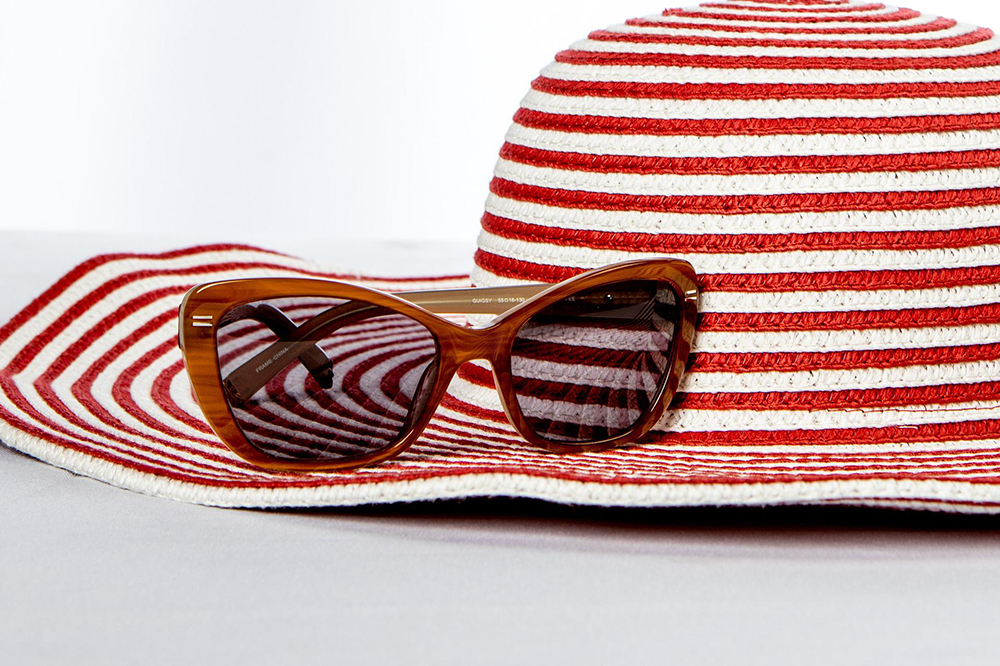Studies show that long-term exposure to bright sunlight may increase the risk of cataracts and growths on the eye, including cancer. UV rays reflected off sand, water and even snow can cause eyes to sunburn, potentially resulting in temporary blindness in just a few hours. In support of UV Safety Month this July, Advanced Eyecare Optometry reminds the public of the importance of shielding eyes from the sun’s harmful rays with 100% UV-blocking sunglasses and broad-brimmed hats.
Tips For UV Safety Month and Always
Here are some tips from the American Optometric Association for UV Safety Month:
- Don’t focus on color or darkness of sunglass lenses: Select sunglasses that block UV rays. Don’t be deceived by color or cost. The ability to block UV light is not dependent on the price tag or how dark the sunglass lenses are.
- Check for 100 percent UV protection: Make sure your sunglasses block 100 percent of UV-A rays and UV-B rays.
- Choose wrap-around styles: Ideally, your sunglasses, either the lenses of the frame, should wrap all the way around to your temples, so the sun’s rays can’t enter from the side.
- Wear a hat: In addition to your sunglasses, wear a broad-brimmed hat to protect your eyes.
- Don’t rely on contact lenses: Even if you wear contact lenses with UV protection, remember your sunglasses.
- Don’t be fooled by clouds: The sun’s rays can pass through haze and thin clouds. Sun damage to eyes can occur anytime during the year, not just in the summertime.
- Protect your eyes during peak sun times: Sunglasses should be worn whenever outside, and it’s especially important to wear sunglasses in the early afternoon and at higher altitudes, where UV light is more intense.
- Never look directly at the sun. Looking directly at the sun at any time, including during an eclipse, can lead to solar retinopathy, damage to the eye’s retina from solar radiation.
- Don’t forget the kids: Everyone is at risk, including children.
- Protect their eyes with hats and sunglasses. In addition, if possible, try to keep children out of the sun between 10 a.m. and 2 p.m., when the sun’s UV rays are the strongest.
And Don’t Forget
In addition to the proper safety eyewear, regular eye exams for early detection and treatment of eye conditions and diseases are essential to maintaining good vision at every stage of life.
According to the American Academy of Ophthalmology, children with a family history of childhood vision problems should be screened for common childhood eye problems before the age of 5. If eye problems such as visual changes, pain, flashes of light, seeing spots, excessive tearing and excessive dryness occur, they should see an eye doctor. Adults between the ages of 40 to 65 should have an eye exam every two years. Adults over the age of 65 should have an eye exam at least every one to two years.
For more helpful eye care and vision care tips, please visit our main blog page.
Source: AOA.org
Image by Rick Bella from Pixabay


Ziatogel
Давно пользуюсь одним замечательным сайтом – настоящая кладезь информации!
Больше всего нравится статья: 12 советов по выбору умных часов для ребенка — безопасность, GPS, управление
Регулярно захожу за свежими статьями, пользуюсь калькуляторами и справочными материалами. Рекомендую всем!
convert USDT in Vienna
Ziatogel
Linetogel
Alpaca Finance
medyum almanya